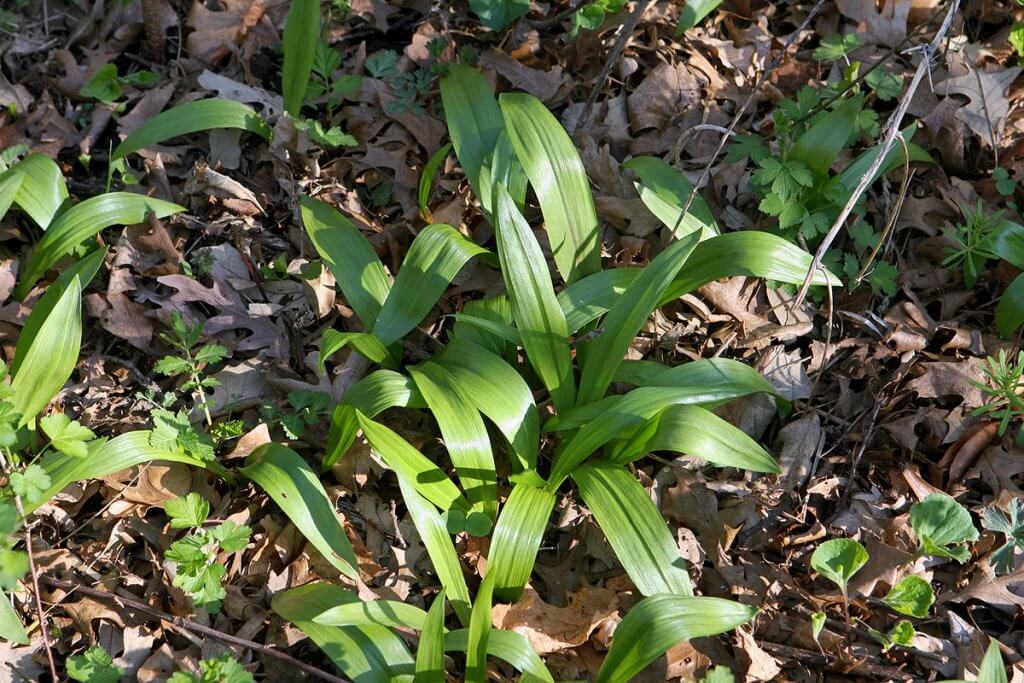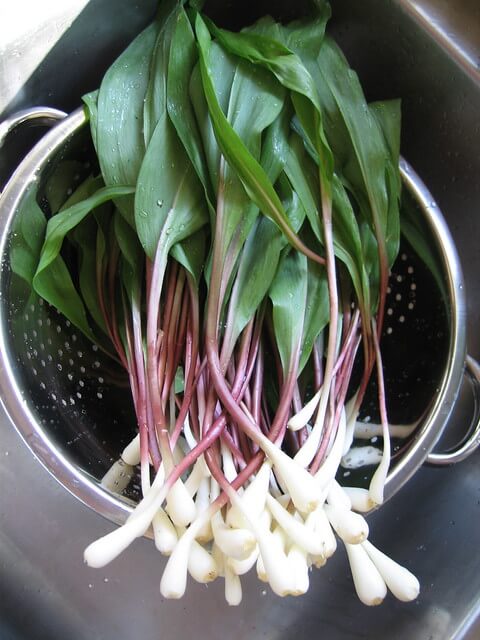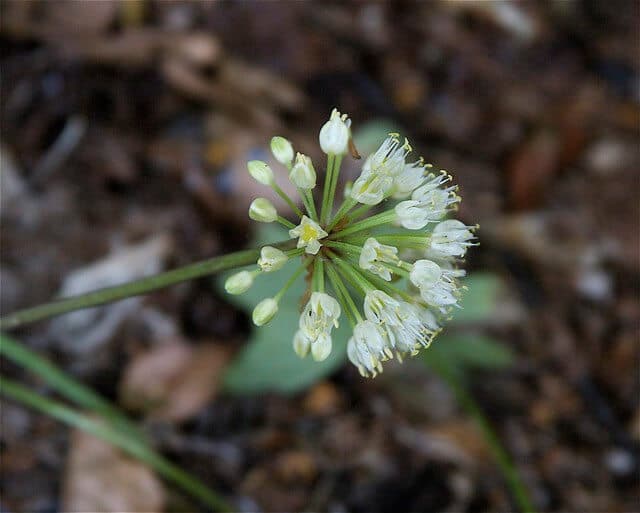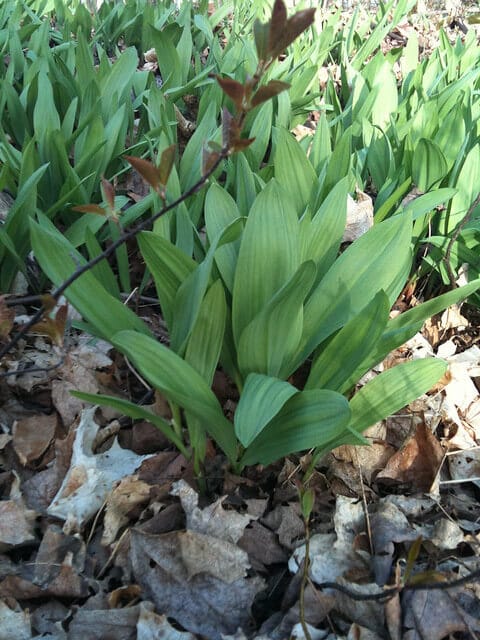
(Photo by: Hardyplants/Wikimedia Commons)
Wild Leeks (Allium tricoccum) have reached an almost legendary status in some parts of the Northeastern US and Appalachia. Although these relatives of onions and garlic can grow in large colonies care should be taken when harvesting. They are perennial plants that are slow to spread. Once the root is harvested it could take a long period of time for the remaining plants to replenish the population. If the population is eliminated in an area it may never return. Wild Leeks are one of the first edible greens to come up in the spring which would have been an irresistible harvest for native Americans and homesteaders of the past.
Edibility and culinary use

(Photo by: dano272/Flickr)
All parts of the plant are edible and tasty. The onion and garlic genus: Allium has evolved an onion or garlic taste and fragrance to repel any animals that might be looking for a snack. Luckily humans countered that by evolving a taste for plants in this genus. Many other species have not evolved this liking of Alliums and are repelled by them. Throughout the millions of years of ape and human evolution harvesting and eating Onion and garlic species very early in the spring when nothing else is available has almost certainly been a life or death situation enough times that we evolved a fondness for these species. The flowers and broad flat wild leek greens can be eaten the same way as any green part of an onion or garlic. The bulb can be eaten the same as any onion, garlic or shallot. In the case of wild leeks if you are not able to harvest wild leeks in quantity or often I would recommend cooking them in a way that lets their flavor stand out. Just frying them with a little oil and salt is a great way to taste the bulb without it getting lost in your food.
Health benefits
Wild leeks have generally the same types of health benefits as commercial leeks. First of all leeks, onions and garlic are loaded with beneficial nutrients. What really makes them stand out is the active compounds that give them their characteristic smell and taste but these compounds also have very positive effects in the human body. Alliums have a very long and diverse history of medicinal use but tend to be one of the first defenses against foreign bodies such as bacteria, virus, fungi, and parasites. Alliums including wild leeks produce compounds with strong antibiotic activity against a wide variety of human pathogens.
Wild Leek Identification

(Photo by: Dan Mullen/Flickr)
There are a number of poisonous look-a-likes to this plant including the very toxic lily of the valley(Convallaria majalis). The toxic lily of the valley is relatively likely to be mistaken for wild leeks, they could easily be growing side by side. Unlike many other Allium species such as garlic and onion leeks have broad leaves that look similar to a number of other plants. There is one reliable way to identify any Allium species and that is its scent. Crush up a leaf and take a whiff. If a plant does not clearly and definitively smell like garlic or onion then assume it is not a wild leek or any other wild Allium species. Once you get familiar with looking at the details of the leaf vs other similar looking plants you will be able to identify this plant by looks alone but you will always be able to test your identification by smelling the plant. Wild leeks are a deep woodland species and can be found on the forest floor of undisturbed areas. Each small bulb supports a set of wide light green leaves early in the spring. They will flower later in the year with a single stalk per bulb and a spherical umbel of white flowers.
Cautions

(Photo by: Bev Currie/Flickr)
As mentioned in the preceding paragraph there are a number of toxic look-a-likes. The best way to be confident in your discovery is to crush up a leaf and smell the plant. As is true with anything in the leek, onion, garlic, and shallot genus: Allium, these species will have a strong distinct odor similar to onion or garlic.
Conclusion
Finding a large patch of wild leeks can be an exhilarating discovery. You can return year after year to harvest wild leeks from your hopefully secret spot. If you would like to ensure the survivability of the patch it is important to practice responsible harvesting practices. For example, only harvest a small portion of the total patch. Also, harvest intermittently so the adjacent plants will have the opportunity to fill in the holes in the colony. In Quebec people have not been practicing responsible harvesting in the past which has lead to wild leeks being classified as a protected species. Quebec legislation puts a limit on the number of bulbs one can harvest annually with the punishment of being fined if that limit is discovered to be broken. So with the right attitude toward forest stewardship, we can all enjoy this native national treasure for years to come.
Many of our readers find that subscribing to Eat The Planet is the best way to make sure they don't miss any of our valuable information about wild edibles.
See our privacy policy for more information about ads on this site






